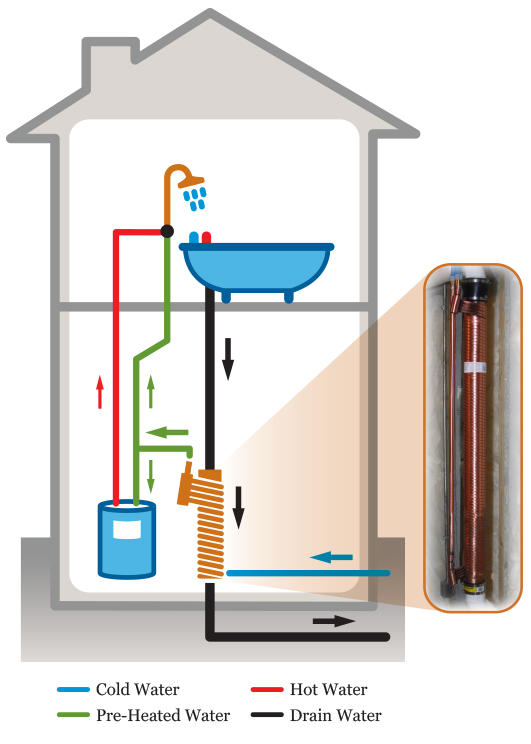Robert Grenley
New Member
Here in Seattle, we are replacing our oil-fired boiler for home heating (hot water, not steam, radiators) with a gas-fired boiler. At the same time, we are looking at replacing our current 75 gallon power vented gas water heater with a new indirect water tank. My issue with our current tank performance is that when I shower with our "unrestricted" shower head and 2 forceful body sprays, by the end of my 10-15 minute shower, I am running out of hot water...it is warm to lukewarm, but not hot, and this is even with reducing the body spray flow to extend the shower time. This is without other hot water usage in the house. The shower head and 2 body sprays may be using 10 Gal/min or more, though I have not done a direct measurement...We are not having any other hot water issues...just the shower as described. Also, our water heater is at about 8-9 years of age, so I would rather replace it now with a better system rather than waiting for a leak.
We are looking at an IBC Interstore indirect tank, and I am confused as to sizing, and how to interpret the ratings to make sure this tank will provide the "almost unlimited" hot water claimed. And what ratings are more important for my specific shower needs...First Hour Rating (Gal/hr), Continuous Rating (Gal/hr), Tank Capacity, or Boiler Water Flow (Gal/min). I have been told that these indirects, even if smaller capacity than what I have, will provide more water capacity and faster recovery than my current tank, but I am still confused as to how to size it for my specific needs.
Specifically, and interestingly, with 2 of the models, the 65 gallon and 80 gallon, the smaller 65 has higher ratings even with a smaller capacity, and the company said that was due to a larger coil in the tank, though it requires higher BTU from Boiler, which capacity we will have...as follows: (I only put the 55gal here for comparison)
BTI 55: 55 gallon tank, FHR 200, CR 156, Boiler water flow 8GPM, BTU required 100K
BTI65: 65 gallon tank, FHR 325, CR 269, Boiler water flow 13GPM, BTU required 172K
BTI80: 80 gallon tank, FHR 239, CR 171, Boiler water flow 10GPM, BTU required 109K
I am not sure how to interpret these ratings, in terms of what I am trying to accomplish, and which ratings are most important. I would hate to go to this expense and find that I am still running out of hot water in my shower.
Any advice would be most appreciated!
Thank you.
We are looking at an IBC Interstore indirect tank, and I am confused as to sizing, and how to interpret the ratings to make sure this tank will provide the "almost unlimited" hot water claimed. And what ratings are more important for my specific shower needs...First Hour Rating (Gal/hr), Continuous Rating (Gal/hr), Tank Capacity, or Boiler Water Flow (Gal/min). I have been told that these indirects, even if smaller capacity than what I have, will provide more water capacity and faster recovery than my current tank, but I am still confused as to how to size it for my specific needs.
Specifically, and interestingly, with 2 of the models, the 65 gallon and 80 gallon, the smaller 65 has higher ratings even with a smaller capacity, and the company said that was due to a larger coil in the tank, though it requires higher BTU from Boiler, which capacity we will have...as follows: (I only put the 55gal here for comparison)
BTI 55: 55 gallon tank, FHR 200, CR 156, Boiler water flow 8GPM, BTU required 100K
BTI65: 65 gallon tank, FHR 325, CR 269, Boiler water flow 13GPM, BTU required 172K
BTI80: 80 gallon tank, FHR 239, CR 171, Boiler water flow 10GPM, BTU required 109K
I am not sure how to interpret these ratings, in terms of what I am trying to accomplish, and which ratings are most important. I would hate to go to this expense and find that I am still running out of hot water in my shower.
Any advice would be most appreciated!
Thank you.

